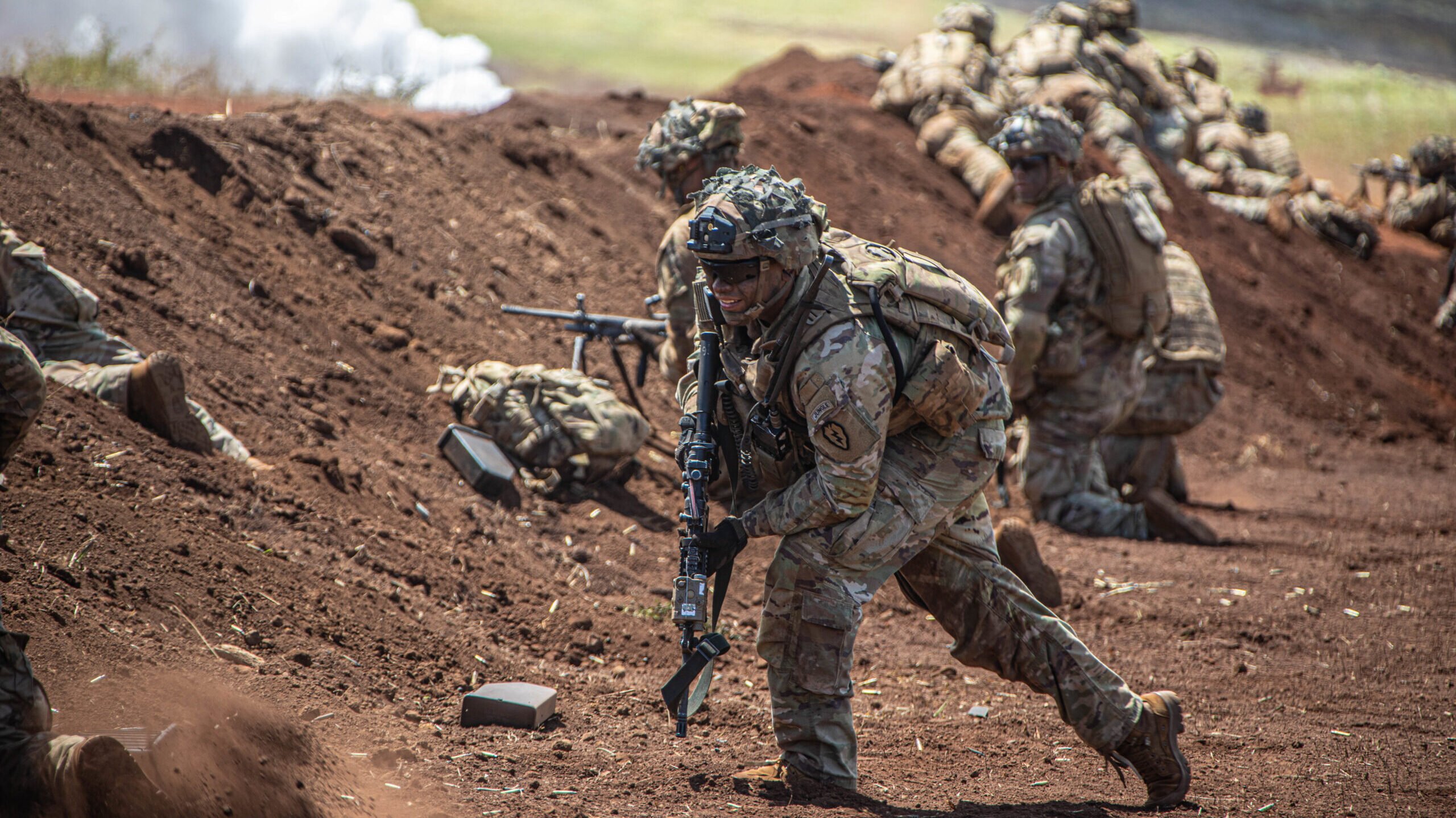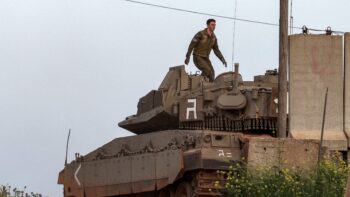
Soldiers assigned to the Pacific-based 25th Infantry Division perform an air assault mission. (Pfc. Daniel Proper/US Army)
WASHINGTON: The US Army would serve as the “linchpin service” for the joint force in the Indo-Pacific should fighting break out there, the secretary of the army said today, detailing the five support and combat roles she sees the Army playing in a region with clearer Navy and Air Force missions.
Secretary Christine Wormuth said that in a conflict with China the service would have three support missions within the joint force: building and defending bases in the Pacific, providing command and control for the broader military, and sustaining logistical supply lines across vast distances.
“The joint force will be dispersed throughout the region. We will be operating from many different bases,” Wormuth said in a speech at the Center for Strategic and International Studies. Beyond physically protecting the force, she said, “there has to be a way of distributing supplies, munitions, fuel to the entire joint force — to providing command and control, you know, over that very wide area. And the Army, I think, is very well-positioned to do that.”
Wormuth said the service’s network will be the “backbone” of joint force communications in the Pacific, and the Army is an obvious choice to provide command and control.
“The Army, with its substantial planning and operations capacity at the division and corps level, is uniquely well-placed to provide command and control for the joint force,” she said.
Creating a joint, common operating picture is a crucial piece of command and control for the joint force. The Army learned at its recent joint Project Convergence experiment that the services have substantial work to do to get their disparate common operating picture synchronized — a “single pane of glass” through which commanders can see all battlefield data.
As far as combat, Wormuth said the Army could take an offensive role with its long-range precision strike capabilities under development as part of the service’s extensive modernization effort.
The Army currently is developing a Long-Range Hypersonic Weapon that can fly up to 1,725 miles, a Mid-Range Capability that can reach 1,100 miles and its Precision Strike Missile which right now has flown beyond to 499km, but the Army will likely try to fly further. All three of those options are expected to be in prototyping by fiscal 2023.
Those missiles will allow the service to strike enemy forces on land, “suppress enemy air defenses, and provide counter-fires against mobile targets,” Wormuth said.
Finally, the Army would likely be called upon to counter-attack in the event of an enemy incursion. Wormuth said infantry, Stryker and combat aviation brigades would play that role to “restore the territorial integrity of our allies and partners.”
Wormuth: Army ‘Very Interested’ In Broadening Basing Arrangements
One critical challenge the Army and broader US military faces in the Pacific, however, is geopolitical in nature: access to bases. More Indo-Pacific bases, spread across the vast area, would allow the US more places for troops and long-range strikes.
The Pentagon recently released its heavily classified Global Posture Review, which explored the US military footprint globally and concluded that no major strategic shifts were needed, aside from some operation level changes like new rotations and military construction. But Wormuth said that the service is “very interested in broadening the access and basing arrangements that that we already have” and expanding it into other parts of the region, particularly Southeast Asia.
“There is very much a desire to be able to expand our access and basing arrangements more into Southeast Asia because if we were able to do that we would have a more dispersed posture that would give us much more flexibility,” Wormuth said. “So looking forward I think it is very much in our interest and in the interests of our allies and partners to explore how we can shift that posture over time.”
Expanding those agreements is an issue for the State Department and higher levels of the Pentagon, she said. The implications for the Army in the Global Posture Review focus on pre-positioning assets in the Pacific as is.
“An important part of the Global Posture Review was thinking about where we can increase opportunities for pre-positioning of equipment and stock,” Wormuth said. “So that is something that we will be looking at and looking at ways to put more into the region, to use our already pre-positioned assets in the region that are there more efficiently so that we can get more bang for our buck out of what we already have there.”






















